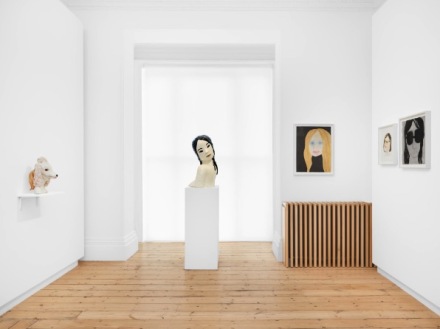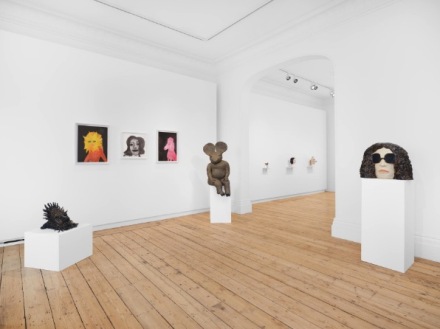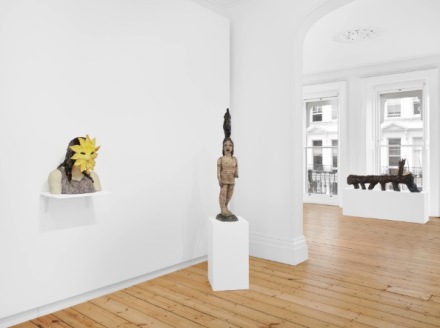
Klara Kristalova, The Cold Wind and the Warm (Installation View), via Lehmann Maupin
This summer in London, Lehmann Maupin presents The Cold Wind and the Warm, an exhibition of new work by Klara Kristalova, dwelling on the artist’s figurative ceramic sculptures that incorporate both aspects of the human body and elements of nature, and marking her first solo show in London.
Across her oeuvre, Kristalova explores transitional states essential to both human and ecological life. Crafted in the artist’s secluded studio in Norrtälje, Sweden, Kristalova’s uncanny sculptures explore the tension between innocence and horror, conjuring an awkward yet powerful presence. Building a world that bridges humanity, ecology, and fantasy, Kristalova’s work emphasises the omnipresence of change across all life forms. The works in The Cold Wind and the Warm are often influenced by small details in Kristalova’s immediate surroundings. Kristalova began paying closer attention to the material details of her everyday life as a result of the immense environmental changes realized by recent global events. The result is an imaginative juxtaposition of scale where minute details reflect the monumental impact of constant global change.

Klara Kristalova, The Cold Wind and the Warm (Installation View), via Lehmann Maupin
Across the show, Kristalova fuses quotidian and fantastical details, extracting strangeness from mundanity. Depicting hybrid figures that contain both anthropomorphic and animalistic qualities, many of the sculptures exist in a liminal space between humanity and nature–or perhaps challenge such distinctions altogether. Throughout, the figures’ postures mimic ordinary human movement, while their titles reveal the artist’s wry sense of humour. Each sculpture is extraordinary; together, they memorialize the strangeness of everyday encounters, leaving ample room for identification and estrangement.

Klara Kristalova, The Cold Wind and the Warm (Installation View), via Lehmann Maupin
While they possess human qualities, many sculptures also contain the traces of ecological processes. Lust for Life comprises a figure with outstretched arms whose craggy body resembles a tree trunk, while Fireplace depicts a figure made of bricks, flickering flames erupting from her head. In each, the conflation of the natural and the human, the figure and its backdrop, takes center stage, Kristalova meditating on the nature of our relationship to an increasingly unbalanced world.
The show closes September 9th.
– D. Creahan
Read more:
Lehmann Maupin [Exhibition Site]



